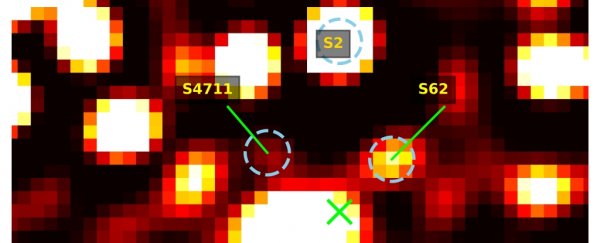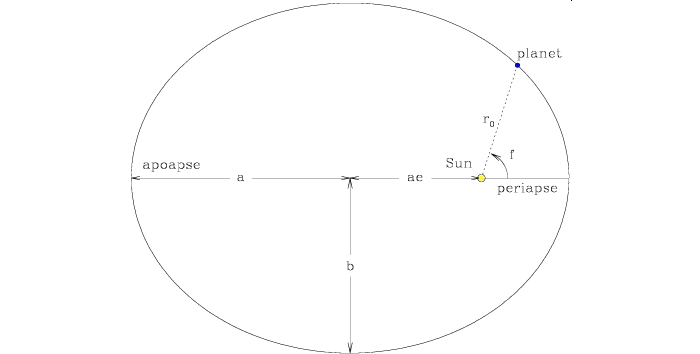At 8% the speed of light, this is the Milky Way’s fastest star.
Today we have found the star in the Milky Way galaxy moving at the greatest velocity known to date. A newly confirmed star dubbed S4714 surrounds the supermassive black hole known as Sagittarius A* situated in the unforgiving conditions of the Milky Way’s heart. In its orbital flight, the black hole S4714 moves at a rather impressive speed of 24,000 kilometers per second (15,000 miles per second) which is equal to the 8% of the speed of light. But even that is not the most magical of things.

S4714, and others, have been observed to be orbiting Sgr A* on closer orbits than other stars observed up to date.
This discovery not only raises the possibility that there are even more stars circling the supermassive black hole in our galaxy on risky orbits, but it also provides the first candidates for a kind of star that was first proposed almost 20 years ago: stars that get close enough to a black hole to be subjected to the so-called ‘tidal forces’ of the hole.
They are also known as ‘squeezars’. While the center of the Milky Way has somewhat less action compared to other active galactic centers, it is important to remember that sometimes even a dormant supermassive black hole can make things pretty wild.
Subsequently, pristine stars in the region are observed to be on long, looping, sharply elliptical orbits around Sgr A*; imagine an oval which starts from the black hole. This is how astronomers have come to identify these stars. These stars are known as S stars and we shall use them to study the properties of the massive unseen entity that revolves around it.

S2 was once considered to be the closest star to the black hole for a very long time. Due to its wide orbit, it passed as close as roughly 18 billion km to Sgr A* at the closest point known as periapse. The star was accelerated up to 3 percent the speed of light due to the kick that it received from the proximity with this black hole. This is a journey that has taken diligent efforts in order to watch and describe this orbit.
However, a group led by the German astrophysicist of the University of Cologne namely, Florian Peissker identified S62, a much dimmer but relatively nearby star in the past year.
On a 9. year, nine-year orbit, it hardly misses the supermassive black hole Sgr A* at a periapsis of 2. 4 billion kilometres. That is nearer to the mean separation of Uranus from the Sun. The uri gets to velocities of 20,000 km/s (12,400 mps) or 6. A photon loses 7% of its speed as it goes around the loop.
Peissker and his group may not have stopped there but the idea of the book and the concept of law as literati made a great impact in engaging the audience. What is more, after sorts of investigation years five closer S stars such as S4711, S4712, S4713, S4714, and S4715 are discovered.
“I am happy that I had the opportunity to work with and observe (with the Very Large Telescope) the Galactic center for the last 7 years,” Peissker said ScienceAlert.
“Since then I have been reducing the near-infrared SINFONI data and that requires data-reduction, good vision, patience and a bit of luck There is also of course the low and high pass filters and their understanding. ”
Among all the new stars, S4711 and S4714 are the two that could be easily distinguished most.
Orbital period of 21 days is explained by having a periapse distance of 21. 5 billion kilometers, blue B-type star S4711 which is believed to be 150 million years old takes 7 to go round Sgr A*. Six years, consequently, its orbital period is even shorter than S62.
It doesn’t skim as close, yet due to its short orbital period, it has the shortest mean distance to the black hole in the course of its orbital motion that we know of at the present time.
S4714, on the other hand has a higher eccentricity of 12 years implying that the path it takes is elongated; in essence, the path taken is close to being as stretched as much as a stable orbit can be. Orbital eccentricity has a scale from 0 to 1; 0 meaning that the orbit is a perfect circle; and 1 meaning that the orbit is an escape orbit. The measurement of eccentricity of S4714 is 0. 985.
Slightly closer than in the S62 model, it approaches Sgr A* at periapse by about 1. These distances are; 9 billion kilometers (1. 2 billion miles). They move at such a high speed that the star would accelerate to a speed of 24,000 km/sec as it gets closer to the black hole before gradually decelerating as it moves out to distances of up to 250 billion kilometers from the black hole.
Extreme stars, Peissker said, are the first real candidates for squeezars, first created in 2003.
A type of stars with highly elliptical orbits, having strong interactions with supermassive black holes was revealed by Tal Alexander and Mark Morris. At periapsis, part of the orbital kinetic energy of the star is spent by tidal forces heating up the system. This makes the star luminous than it is and also causes the rate at which the star orbits increases. Squeezars are, in other words, dead stars orbiting.
“At least S4711 and S4714 are squeezar candidates,” Peissker said. “I would say, I am sure about S4711 since the orbital elements are in line with what Tal Alexander predicted in 2003 as the orbital elements of a squeezar This means S4711 is the only known squeezar to date. ”
Should these sources be confirmed, they may shed light into how black holes feed on stars which they (inevitably) devour. But they also have more possibilities.
General relativity has recently been studied in association with S2, for example. And in some of the most challenging experiments to date, Einstein is right again by the way that the lenses warp the light as the star moves towards the black hole, and by how it precesses in an orbit that can be diagrammed as a spirograph.
“In fact, we are about ten times closer to Sgr A* and about three and a half times as fast as S2 during the pericentre passage,” Peissker said. “With that we find actually stronger relativistic interactions with the stars S62, S4711 and S4714 than with S2.
After SINFONI was shut down these tests have not been executed and thus one can expect long delay for observations. Still, it’s undoubtedly is under the observation and scrutiny of astronomers.
The search for more of these nearby stars is still also being conducted too. It can be supposed that even more extreme orbits and velocities can be waited in the region around Sgr A* Given it should be possible to find all of them with the help of more potent telescopes, for example, Extremely Large Telescope, which will be launched in the following years.
It’s all just a matter of time, all of it.
Laughing sideways in her message, Peissker said, “I am pretty sure that this was not our last publication and I am constantly working on the galactic center. “The high dynamical environment is for scientists like a candy-shop for children. ”
The Astrophysical Journal has published the research.
Do not forget to share your opinion with us to provide you with the best posts !




0 Comments